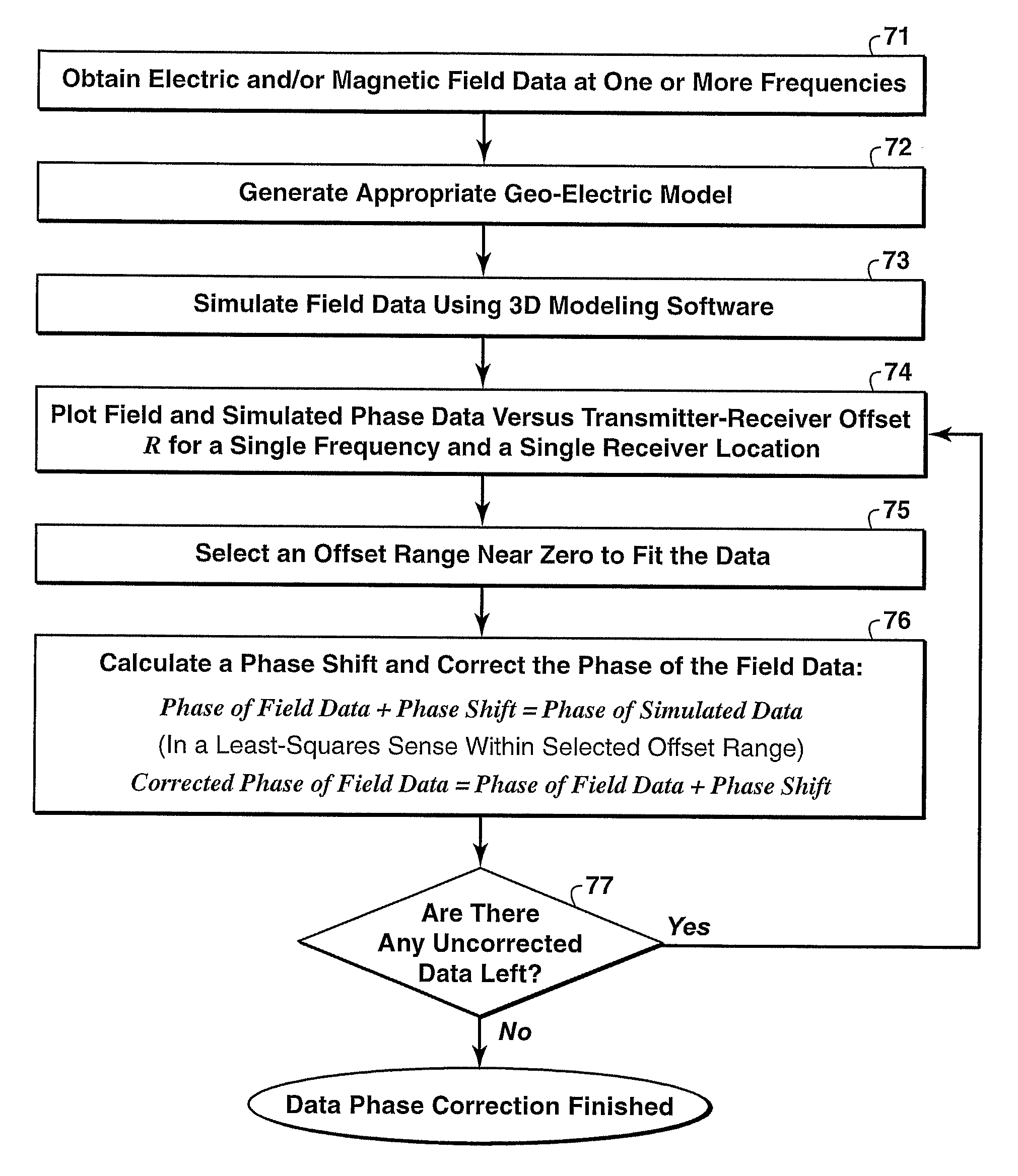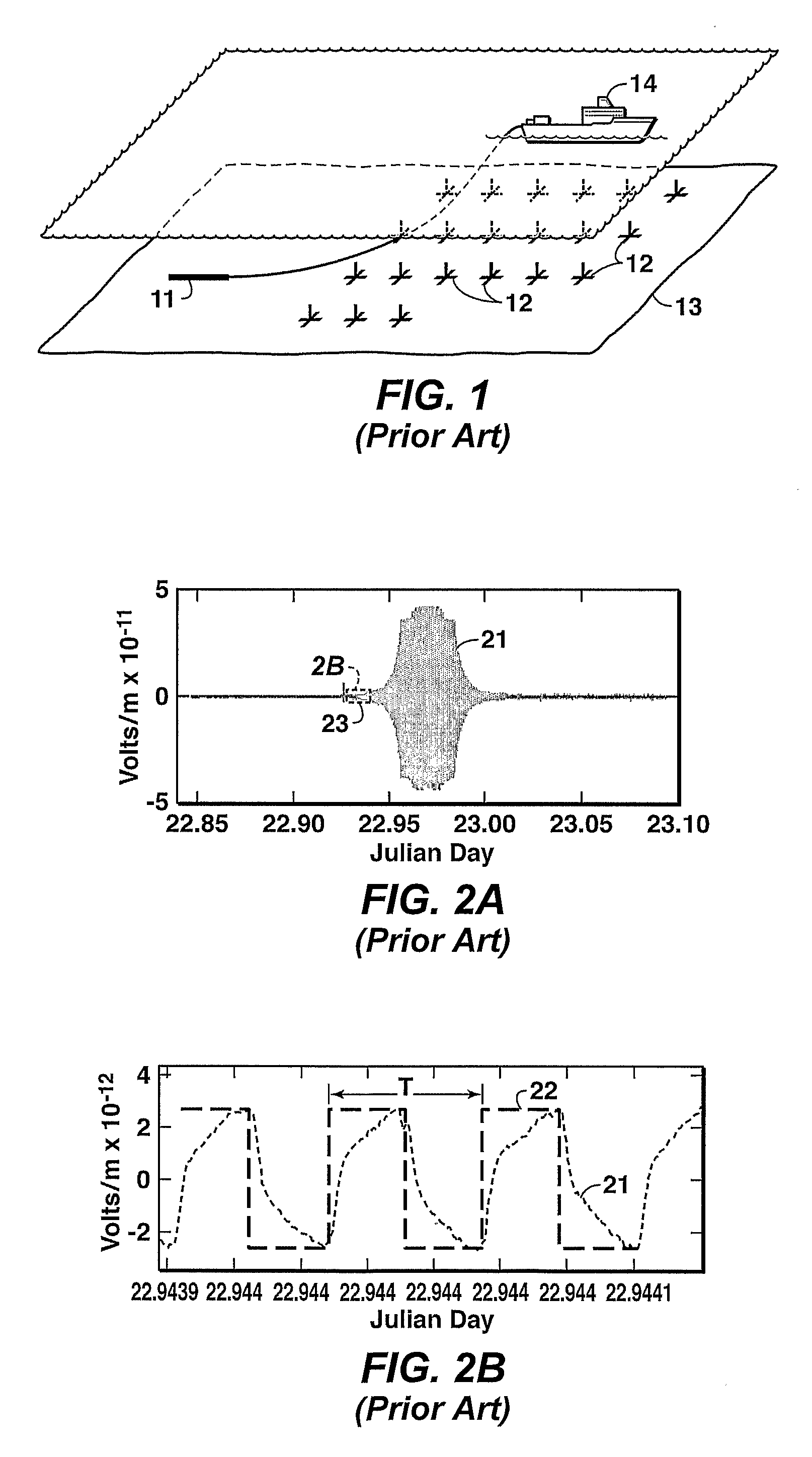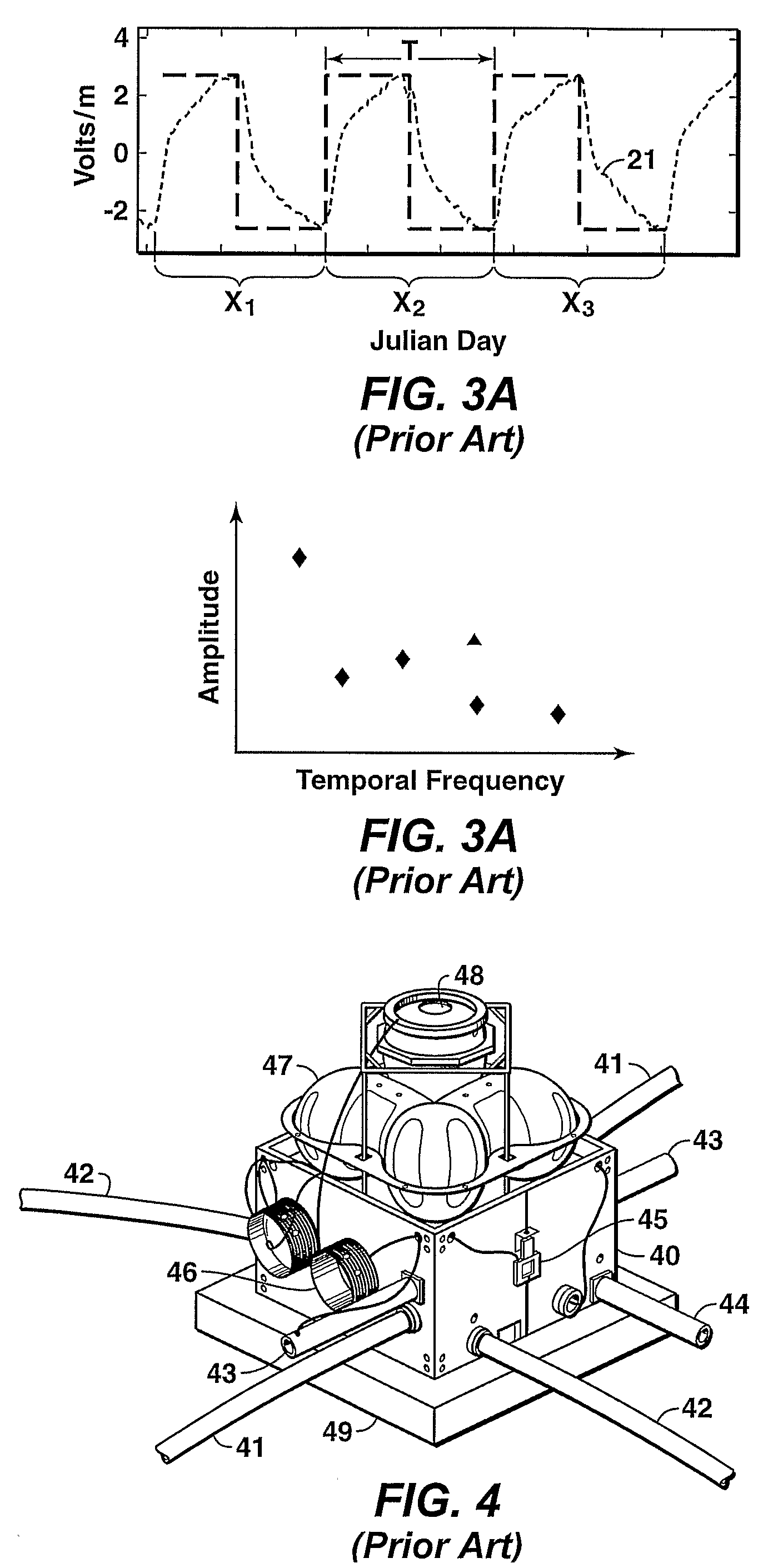Method for Phase and Amplitude Correction in Controlled Source Electromagnetic Survey Data
- Summary
- Abstract
- Description
- Claims
- Application Information
AI Technical Summary
Problems solved by technology
Method used
Image
Examples
Embodiment Construction
[0049]The present invention mitigates phase and / or amplitude errors in MCSEM surveys by exploiting the fact that marine electromagnetic data generated by the source near the receiver are dominated by the water conductivity and influenced to a lesser extent by the conductivity of the shallow sediments. The conductivity of seawater is usually in the neighborhood of 3.3 S / m and can often be measured directly while the conductivity of the shallow sediments can be adjusted to best match the data across multiple frequencies. Moreover, when the electric bipole transmitter approaches zero offset from the receiver, the electric field parallel to the transmitter bipole should approach zero phase relative to the transmitter and approach infinite amplitude. This provides a means to determine the required amplitude and phase correction using numerical modeling on a computer, since an earth model with the correct water conductivity and approximately correct sediment conductivity will give rise to...
PUM
 Login to View More
Login to View More Abstract
Description
Claims
Application Information
 Login to View More
Login to View More - R&D Engineer
- R&D Manager
- IP Professional
- Industry Leading Data Capabilities
- Powerful AI technology
- Patent DNA Extraction
Browse by: Latest US Patents, China's latest patents, Technical Efficacy Thesaurus, Application Domain, Technology Topic, Popular Technical Reports.
© 2024 PatSnap. All rights reserved.Legal|Privacy policy|Modern Slavery Act Transparency Statement|Sitemap|About US| Contact US: help@patsnap.com










